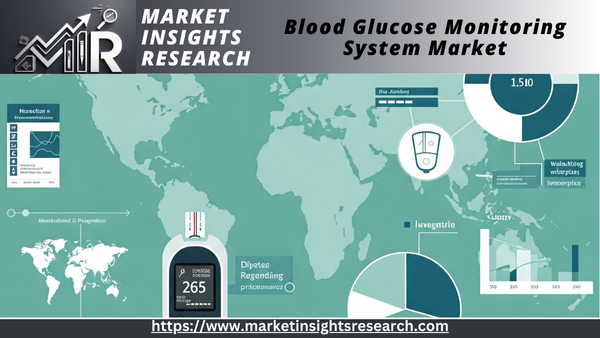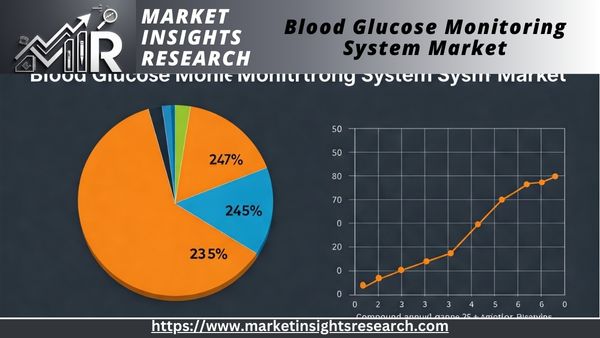Blood Glucose Monitoring System Market
The global blood glucose monitoring system market is projected to grow from $16.4 billion in 2025 to $36.7 billion by 2035. The surge is led by rapid adoption of continuous glucose monitors (CGMs), AI-integrated devices, and personalized health dashboards.
Reports Description
The blood glucose monitoring system market is witnessing a transformation led by digital health integration, wearable sensors, and predictive analytics. As diabetes prevalence continues to rise globally, this report provides a comprehensive outlook on how technology, accessibility, and user-centric innovations are shaping glucose monitoring solutions between 2025 and 2035.

Download Sample Ask for Discount Request Customization
Market Significant Growth Factors
-
Rising global diabetes prevalence and earlier detection trends
-
Advancements in non-invasive and wearable technologies
-
Increased demand for real-time glucose tracking
-
Government support for diabetes awareness and screening programs
-
Integration with telehealth and mobile health platforms
Report Scope
|
Parameter
|
Details
|
|
Forecast Period
|
2025–2035
|
|
Base Year
|
2024
|
|
Market Segments
|
Device Type, Technology, End-user, Region
|
|
Coverage Regions
|
North America, Europe, Asia-Pacific, Latin America, MEA
|
|
Primary Technologies
|
Electrochemical, Optical, AI-integrated
|
|
Delivery Format
|
PDF, Web Dashboard, Data Toolkit
|
Download Sample Ask for Discount Request Customization
Report Coverage & Deliverables
-
Global forecasts segmented by device, technology, and user type
-
Adoption trends in hospital vs. home-use settings
-
Regulatory frameworks and data privacy dynamics
-
Competitive intelligence and innovation benchmarks
-
Strategy maps for stakeholders and investors
U.S. Market Trends
The U.S. is driving innovation through Medicare expansion for CGMs and large-scale integration with mobile apps. Remote monitoring is becoming a healthcare standard.
Europe Trends
European markets prioritize CE-certified, eco-friendly wearable sensors. France and the Nordics are early adopters of AI-powered CGMs in public health systems.
Germany Trends
Germany emphasizes precision devices and insurance-backed remote care models. Strong R&D presence supports AI and biosensor development.
Asia Pacific Trends
The region experiences rising awareness and affordability-focused innovations. India and Japan are expanding local production of SMBG and CGM devices.
China Trends
China is scaling production and accessibility of glucose monitoring wearables. Digital health ecosystems are supporting rapid urban adoption.
Recent Developments
-
FDA approvals for needle-free glucose monitors
-
Smart insulin pen and CGM integration pilots
-
Expansion of diabetes remote clinics using Bluetooth-compatible sensors
-
Launch of skin-adhesive nanosensor patches with real-time alerts
Regional Insights
North America and Europe lead in technology and regulation, while Asia Pacific and Latin America are seeing rapid penetration due to mobile-first healthcare delivery.
End-use Insights
-
Homecare UsersFavor wearable, easy-to-use solutions with app connectivity
-
Hospitals & ClinicsDemand real-time monitors for patient management
-
Sports & WellnessUse CGMs for performance tracking and sugar stability
Deployment Insights
-
Self-monitoring Systems (SMBG)High use among elderly and rural populations
-
Continuous Glucose Monitoring (CGM)Preferred in urban, tech-savvy segments
Process Insights
-
Electrochemical SensingStandard for accuracy in finger-prick devices
-
Optical/Infrared TechniquesUsed in non-invasive systems
-
Wireless Data SyncEnabling cloud-based health dashboards

Download Sample Ask for Discount Request Customization
Offerings Insight
-
Blood Glucose Meters (BGMs)
-
Continuous Glucose Monitors (CGMs)
-
Test Strips & Lancets
-
Wearable Patches & Sensors
-
Data Management Software & Mobile Apps
Key Players
Market Segmentation
By Device TypeBlood Glucose Meters, CGMs, Test Strips, Sensors
By TechnologyInvasive, Non-invasive, Smart-connected Devices
By End-userHospitals, Homecare, Wellness, Clinics
By RegionNorth America, Europe, Asia-Pacific, Latin America, Middle East & Africa


